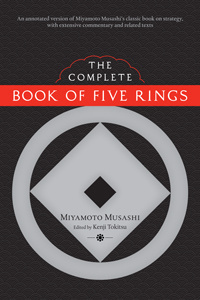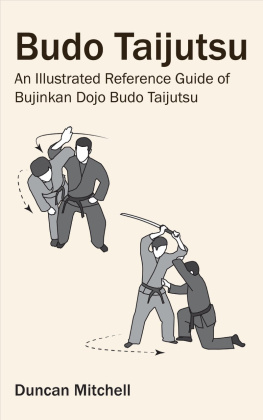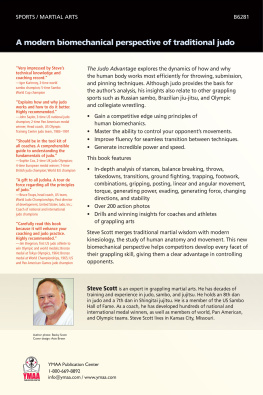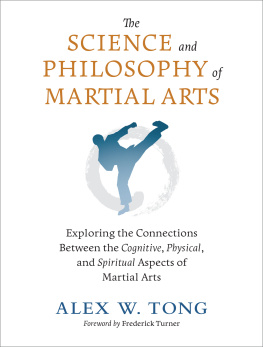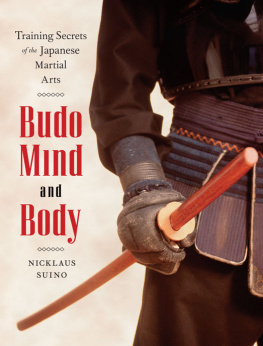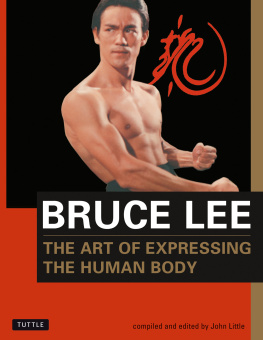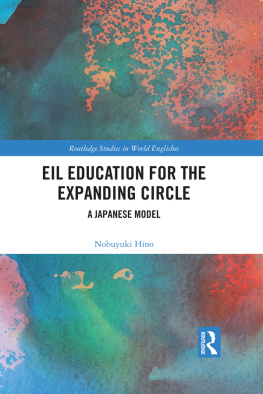Dont Think,
Listen to the Body!
Introduction to the Hino Method and Theory
of human body and movement control
by
Akira Hino
Translation by Yuko Takeda
Copyright 2017 Akira Hino
All rights reserved.
Table of Contents
Introduction
N o great strength of the leg muscles is needed to ride a bicycle. Therefore, riding a bicycle shouldnt increase the muscle mass of the thighs.
Two years ago, an S-Class competitive cyclist came to my class. He wanted to increase the level of his performance. I told him that the connected movement of the whole body moves the bicycle. Specifically, it is the connecting of pelvis, knees and the bottoms of feet initiated by Kyokotsu , a point on the chest bone. The cyclist seemed to understand my words and immediately began training. Since he never uses his thigh muscles to push the pedals, his legs are as lean as those of a long-distance runner. Despite his physical appearance, he has increased his speed since practicing my teaching. He also says that his body has become much more resilient to fatigue: he now knows how to avoid tensing up in order for his whole body to move smoothly. He says that he has enough reserves to cycle yet another race after one race is over.
To use the whole body is a common phrase nowadays. However, there are very few who could use the whole body consciously, no matter what genre of sports, dance, or martial arts they practice. In most cases, one is moving the whole body unconsciously. It is far easier to train individual parts of the body, such as arms and legs, than train the whole body.
However, to prevent muscle fatigue or to produce power, it is far more efficient to gather 10% of power from each of ten specific points of the body than to get all the 100% from the arm only.
What I mean by using is that one is completely conscious of his or her body. To use the body, you need to be able to feel it concretely .
There is, however, a problem. Have you noticed it already?
Understanding or comprehending intellectually a certain movement through words is an entirely different process from the actual bodily movement. This is a good example of a Japanese saying, Swimming practice on tatami mats. No matter how much you analyze and understand the movement of an Olympic swimmer or the technique of an Olympic gymnast, you cannot do what they do. Even if you listen to the explanations by the athletes and understand what they say, it will not enable you to execute their techniques.
You may think that its because those top athletes are just geniuses. But this is not the reason. The point here is that intellectual comprehension and physical movement are two completely different processes. In other words, the more refined the body control gets, the less likely it is that you understand it. The more you try to understand intellectually, the less the body moves at your will.
This insight captures one of the basic characteristics of a human being and also serves as a turning point to determine who will improve and grow or who will not.
How well you can use the separation of understanding and physical movement to your advantage will be a big factor in your growth.
To return to the competitive cyclist who came to my lesson, if he didnt go through the intellectual comprehension of the process, what did he actually do?
He was seeing and feeling.
His seeing is different from the normal seeing, which is associated with understanding and judgement. Normally we see things selectively according to our own judgement. Therefore, the information we get is limited. This kind of incomplete information is a daily occurrence: we often miss certain things at work, or an expert can see certain things that a novice cannot because of the different framework of judgment each of us uses.
However, when one can absorb information like an analogue camera lens reflects everything it catches, the amount of information would be vastly different than the information processed by selective seeing.
Those who can pick up a movement quickly or those who spend a lot of time in preparation are unconsciously engaged in non-selective seeing. They are using images in the realest sense of the word. People with a so-called sense of movement are all seeing movement as if seeing raw photographs.
People without such a sense of movement do not have a clear image of what they should do. In other words, they are not sure about the direction of movement and only manage to digest what is happening in front of their eyes. They might be able to verbalize and understand what they should do or where they are going with their movement, but as I said before, intellectual comprehension and physical movement are two different processes.
That is why I often tell my students, Dont think. Thinking in a conventional sense prevents the ability of the body to see non-selectively.
From the moment when human beings are born, they begin to grow by utilizing this ability to see to the maximum: for example, from the time when babies roll over in their sleep to the time they start to crawl. Some scholars wondered why there are many ways and styles of crawling as well as differences in performance levels. Their study about babies crawling led to a discovery that human beings indeed have the ability to see non-selectively . The great diversity of crawling among babies is due to the lack of movement models or examples for crawling. In other words, without any image to learn from, the movement of babies is the direct manifestation of their curiosity and desire to move. That movement is the beginning of habits .
This book is about Budo , the martial way or martial arts. But it is not a manual book about the forms and techniques of martial arts. Legendary master of sword fighting Ito Ittosai wrote that the essence of sword fighting is to allow the natural functions of the body to work fully. As a result of studying such masters words, here in this book I use words such as whole-body movement, Dont think, and to feel.
In this regard, my theory is not rooted in Western culture. But it is not a theory from a vague Eastern tradition, either. It is a theory rooted in authentic Japanese culture.
I have been teaching my theory abroad in many places, including in Europe. I have even been invited to give workshops for dancers in different genres such as classical ballet, which proves that the techniques can be deployed in many disciplines and cultures.
In my view, legendary masters in the history of martial arts are natural scientists. They regarded a human being as a part of nature and studied it without bias.
July 2016
Akira Hino
Hino Budo Institute
Chapter 1: The State of the Body in Maximum Efficiency
Section 1: The Necessity of Jukozo (Flexible Structure)
Section 2: The Kyokotsu Control Changes the System of Physical Movement
Section 3: Move the Elbow! Not the Hand!
Section 1: The Necessity of Jukozo (Flexible Structure)
In any type of human activity that involves movement, be it martial arts or sports or any genre of dance, the movement needs to be considered as a whole-body movement or the movement of the whole body. Otherwise, it will not be an efficient performance.
1-1 The right posture: Where is the most important part of the body?
I n Budo (martial arts), the importance of koshi is often mentioned. I assume that they are indeed important. However, I have not yet reached a point where I can feel koshi or tanden as an important part of the body. Therefore, I will not conceptualize them further.
Nonetheless, I know that when koshi is weak or loose, it is impossible to exert power or to receive it. Also, when koshi is tense, it is impossible to move freely or to respond to the movement of an opponent.



